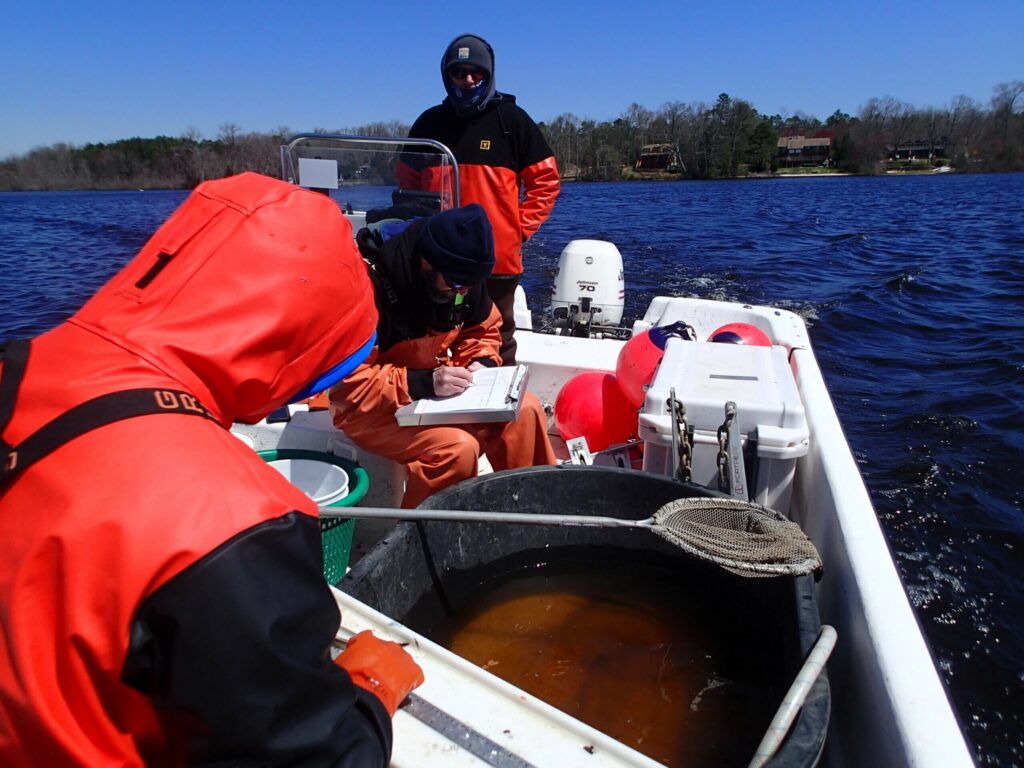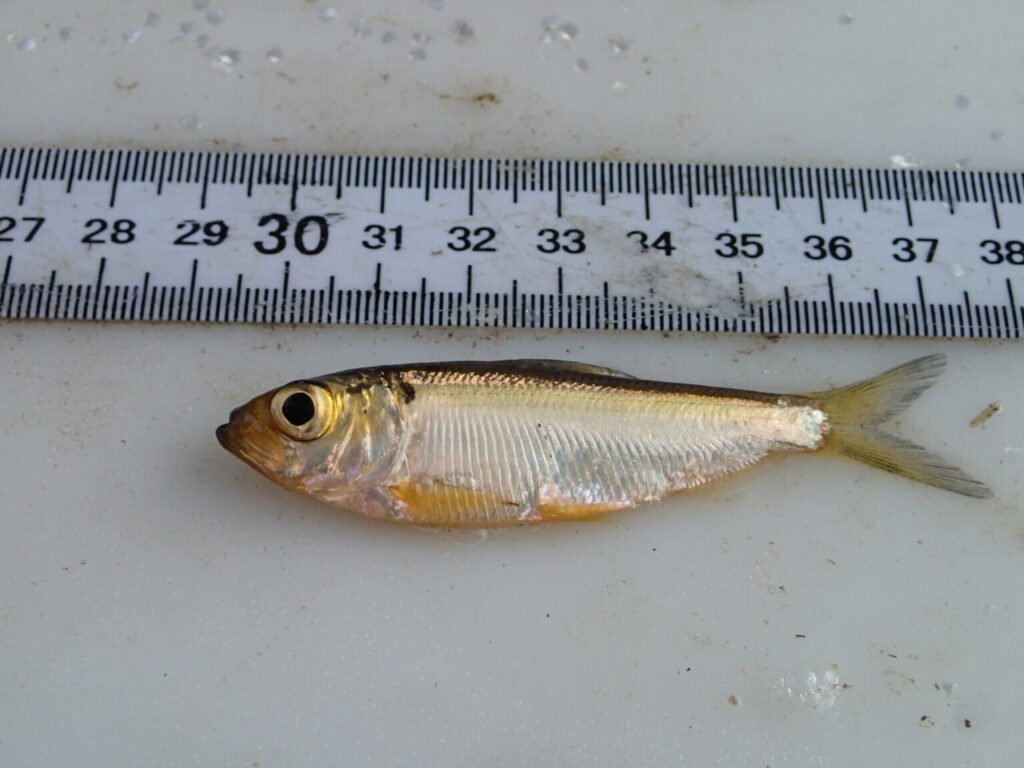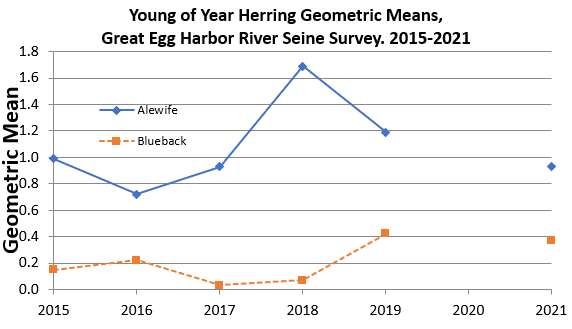
The River Herring Assessment Survey monitors and surveys adult and juvenile populations of alewife and blueback herring (river herring, collectively) in the Great Egg Harbor and Maurice Rivers. These two species populations, which are jointly and cooperatively managed by New Jersey and the Atlantic States Marine Fisheries Commission (ASMFC), have been assessed as depleted on a coastwide basis and surveys like this help to lay the groundwork for species recovery.

The River Herring Assessment Survey was initiated in 2013 in response to the ASMFC’s 2012 River Herring Benchmark Stock Assessment that found both species of river herring to be depleted on a coastwide basis but there was a lack of the quality and quantity of data necessary to make an assessment specific to New Jersey. In order to fill these data gaps and address research priorities that came out of the stock assessment, Bureau of Marine Fisheries (BMF) staff developed an assessment program to understand spawning adult and young of year population abundance within two New Jersey Rivers. The Maurice River, and later in 2015 the Great Egg Harbor River, were chosen as representative examples of Delaware Basin and Atlantic Coastal rivers with known populations of river herring.
Two components of the survey were developed in order to assess two important life history stages of river herring. River herring are an anadromous fish, meaning they are spawned (born) in freshwater rivers and streams and migrate out to the ocean where they grow to be mature adults which return to the same river or stream they were born in to spawn future generations. The first component of the survey uses anchored gillnets in the Maurice and Great Egg Harbor Rivers which intercept these migrating adult river herring on their way up from the ocean to their historic spawning grounds. BMF staff deploy these gillnets perpendicular to shoreline from the bow of a small vessel, using bright orange buoys to mark their location. The nets are left to soak for an hour and a half before they are retrieved and the catch is sorted on board the boat. BMF staff separate and count all species caught and collect biological data from any target species caught including alewife, bluebacks, and striped bass. This data includes number caught, fish length, fish sex, spawning maturity stage, and age data. This component of the survey takes place in the spring from March through May.

The second component of the survey targets the young of year river herring that were spawned earlier in the spring by the migrating adults. From July through the end of October BMF staff deploy a 100 foot seine net at seven different locations on each river. The seine net is deployed from the bow of a small vessel and hauled on shore where BMF staff sort the entire catch down to the species level and a subset of the total target species caught is measured. Beyond blue back and alewife herring, target species for the seine netting portion of the survey include striped bass, winter flounder, blue crabs, white perch, Atlantic silverside, and many more.
From the data collected in each component of the survey an index of abundance is generated based on the number of fish caught per gillnet set for the adult river herring and per seine net haul for the young of year river herring. Data such as this that is collected through fisheries surveys goes into the development of Fishery Management Plans to ensure the sustainable recreational and commercial harvest of species for years to come. For more information on river herring management check out the ASMFC’s website at, http://www.asmfc.org/species/shad-river-herring.
Below are charts detailing the average catch per haul for alewife and blueback herring, both adult and young of the year, from the Great Egg Harbor and Maurice Rivers:




Project Lead Contact Information
Brian Neilan, Fisheries Biologist
Brian.Neilan@dep.nj.gov
609-748-2020
 Official Site of The State of New Jersey
Official Site of The State of New Jersey

